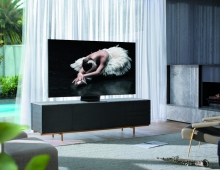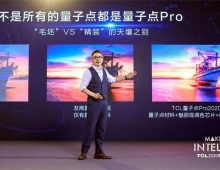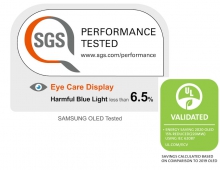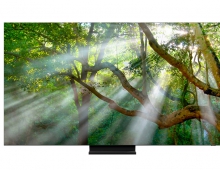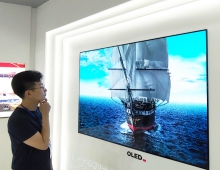
This Year's CES Expected to Be a QLED Vs. OLED Battle Again
Samsung Electronics and LG Electronics are set to compete against each other with their own respective next-generation TVs at January's 'CES 2018' event, although it will probably be another battle between QLED and OLED.
As paart of Samsung's 'infinite expansion' strategy, the company is expected to unveil larger than 80 inches QLED TVs, while rival LG will underline the advantages of OLED TVs and the capability of OLED to transform into many form factors.
Samsung is able to release larger QLED TVs, knowing that LG cannot keep up in terms of size, due to the high price of large OLEDs. Samsung will promote its upgraded its QLED TV technology, which focuses on enhancing the representation of the black color - a typical "weakness" of QLED TVs. Its 'dimming' technology controls directly the LED backlight and the brightness of the QLED.
Samsung is also planning to introduce a 8K QLED TV.
LG Electronics plans to introduce an OLED TV featuring an upgraded CSO (Crystal Sound OLED) panel - a panel already used by Sony. But LG's new OLED TV model has the ability to detect the position of the viewers and direct the TV's sound to them.
CSO is a technology that allows the sound to come out from the screen. It is based on a principle that provides sound by making a screen vibrate. CSO is designed to vibrate panels upward and downward so that viewers cannot see any vibration of sound from a TV screen. In addition, the panels are vibrated so fast and so finely that human eyes cannot see any vibration.
CSO currently produces 2-channel stereo sound. But a future version of CSO will offer multi-channel sound, according to LG Display.
LG will also unveil 4mm-thick wallpaper OLED TVs.
In terms of next-generation display technologies such as Micro LED or rollable displays, the two Korean rivals are expected to showcase concepts but actual products should be expected by the year end or even later.
Micro LED technology utilizes a light-emitting display, which means it does not require a backlight as each pixel produces light like OLED. One difference is the use of an inorganic material, such as Gallium Nitride, which allows a much thinner display. However, Micro LED displays have very small LEDs - smaller than 100 micrometres in both width and height - making their production difficult. But in theory, Micro LED displays will consume less power and won't have burn-in problems like OLED.
An earlier report said that Samsung would unveil a 150-inch Micro LED TV at the Consumer Electronics Show.



